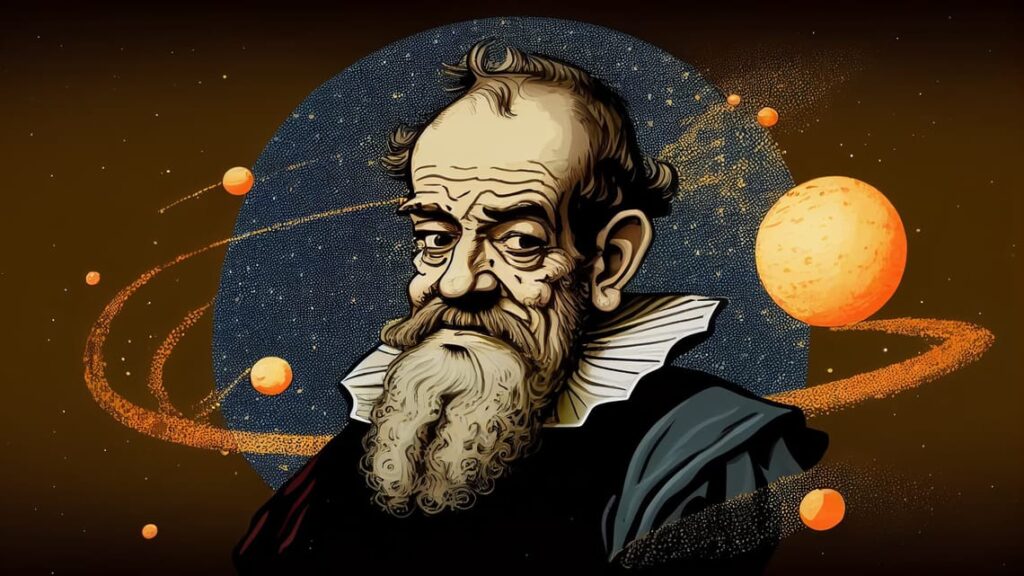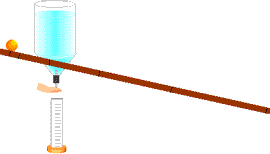From The Ten Most Beautiful Experiments by George Johnson
In the 4th century BC, Aristotle boldly embarked on elucidating the principles of motion, contending that an object’s descent is directly proportional to its weight. According to him, the weightier the object, the quicker it descends. Aristotle extended this idea to other forms of motion, asserting that continuous force is requisite for sustained movement – a notion suggesting that increased force leads to heightened speed, and cessation of force results in a halt. While initially intuitive, Galileo’s groundbreaking work later debunked Aristotle’s claims. Galileo demonstrated that objects in motion persist in that state until acted upon by an external force or impeded by friction, challenging Aristotle’s understanding. By so doing Galielo described gravity and how it acts on objects in a new way

Galileo’s experiment with one-pound and five-pound weights falling simultaneously showcased that weight does not affect the rate of descent. Despite his advocacy for Copernicus’ sun-centered solar system, Galileo did not fully embrace Kepler’s vital revelation that planets move in elliptical orbits. This highlights the nuanced and evolving nature of scientific discourse which was spurred on by how Galileo described gravity.
Galileo’s contribution was his extensive exploration of the movement of ordinary, seemingly straightforward objects – a subject that proved to be far more intricate than anticipated. Engaging in a conversation with three Italian noblemen, namely Salviati, Sagredo, and Simplicio, the trio sought to unravel the mysteries of the world.
Salviati, acting as Galileo’s representative, initiated the discussion by asserting that, when dropped simultaneously, a 100-pound cannonball and a 1-pound musket ball would nearly synchronize in reaching the ground. Conducting an experiment, Salviati acknowledged a slight time difference favoring the heavier cannonball, but astutely recognized the complicating influence of air resistance on the results. The crux of the matter, he emphasized, was the simultaneous impact of both objects.
Contrary to conventional wisdom, where common sense might suggest a heavier object would fall faster, Galileo’s experiment revealed that, with all other factors equal, the speed at which an object descends is independent of its weight. In this way, Galileo described gravity’s effect on objects in a different light. This profound insight challenged preconceptions about motion and laid the groundwork for a more accurate understanding of gravitational forces. Delving into the dynamics of a falling object posed a more challenging inquiry: understanding the events transpiring between the moment a ball was set free and its eventual collision with the ground. In an era, devoid of advanced technologies like time-lapse photography or electronic sensors capable of precisely measuring a falling body’s descent, the endeavor was constrained to mere speculation. Recognizing this limitation, Galileo sought an alternative experiment that would offer a more gradual descent, making the process easier to observe and analyze.
Three years later, either Galileo or Salviati detailed the essence of their experiment. They selected a piece of wooden molding, approximately 12 cubits in length, half a cubit wide, and three finger-breadths thick. Carving a channel slightly over one finger in breadth along its edge, they meticulously crafted the groove to be straight, smooth, and polished.
To conduct the experiment, they introduced a very round bronze ball, ensuring a seamless fit within the channel lined with parchment. Imagining Galileo with a twenty-foot-long board, ten inches wide, he positioned it at an angle by propping up one end one or two cubits above the channel. With the board set in this sloping position, they observed the descent of the ball, noting the time it took in a manner soon to be explained. This process was repeated multiple times, and their precision in measuring time never exceeded one-tenth of a pulse beat. Once they honed this technique, Salviati elucidated that they measured the time it took for the ball to traverse specific sections of the track, including one-fourth, two-thirds, and three-fourths of the distance. The experiment was replicated with the board set at various slopes, amounting to 100 measurements in total. These observations were facilitated by a straightforward device known as the water clock, essentially an hourglass that measures seconds using liquid instead of sand.

They utilized a sizable container of water positioned at an elevated point. The vessel’s bottom featured a small-diameter pipe, releasing a slender stream of water that they carefully collected in a small glass during each descent, whether for the entire channel or a portion of its length. Subsequently, the collected water from each descent was meticulously weighed using a highly accurate balance. Analyzing the differences and ratios of these weights provided them with corresponding differences and ratios of the times involved. This process achieved remarkable precision, as even with the repetition of the operation numerous times, there was no noticeable discrepancy in the results. However, Alexander Koyre criticized the Galilean experiment, deeming it worthless. He believed the experiment had an accumulation of potential sources of error and relied on imaginative demonstrations.
While researching new English translations of “Two New Sciences,” Drake uncovered Galileo’s recorded experimental data. These experiments led to the formulation of a groundbreaking law, revealing a time-squared relationship. According to this principle, the steeper the slope, the faster the ball would roll. Conversely, at a zero-degree slope, there would be no acceleration. In how Galileo described gravity, he attributed this to the combination of downward vertical acceleration, resulting in the familiar parabolic trajectory of the projectile.
The Legacy From How Galileo Described Gravity
Thomas B. Settle and Drake questioned how Galileo, starting from a position of ignorance, could have discovered such a relationship with what seemed like a rudimentary apparatus. Drake proposed a fascinating speculation: Galileo, relying on an internal rhythm, could accurately divide this beat into equal portions. Drake suggested that before the ball descended the incline, Galileo established a rhythm through a simple tune, allowing him to precisely divide the beat, rivaling the accuracy of any mechanical instrument.
Drake conducted an experiment by employing the song “Onward Christian Soldiers,” set at approximately two beats per second. Releasing the ball at the incline’s summit, he marked positions at each upbeat using chalk. In accordance with the law, the ball rolled progressively faster down the hill. Drake suggested that Galileo likely refrained from documenting his method due to a fear of appearing silly.
Even over three centuries since his passing, the History of Science Museum in Florence displays a desiccated finger that once retrieved the metal ball at the conclusion of each descent down the incline, facilitating its return to the top for another round. This preserved finger, accompanied by a tooth, the fifth lumbar vertebra, and a couple of additional fingers, was part of Galileo’s exhumed remains when he was relocated to a more suitable burial site.
